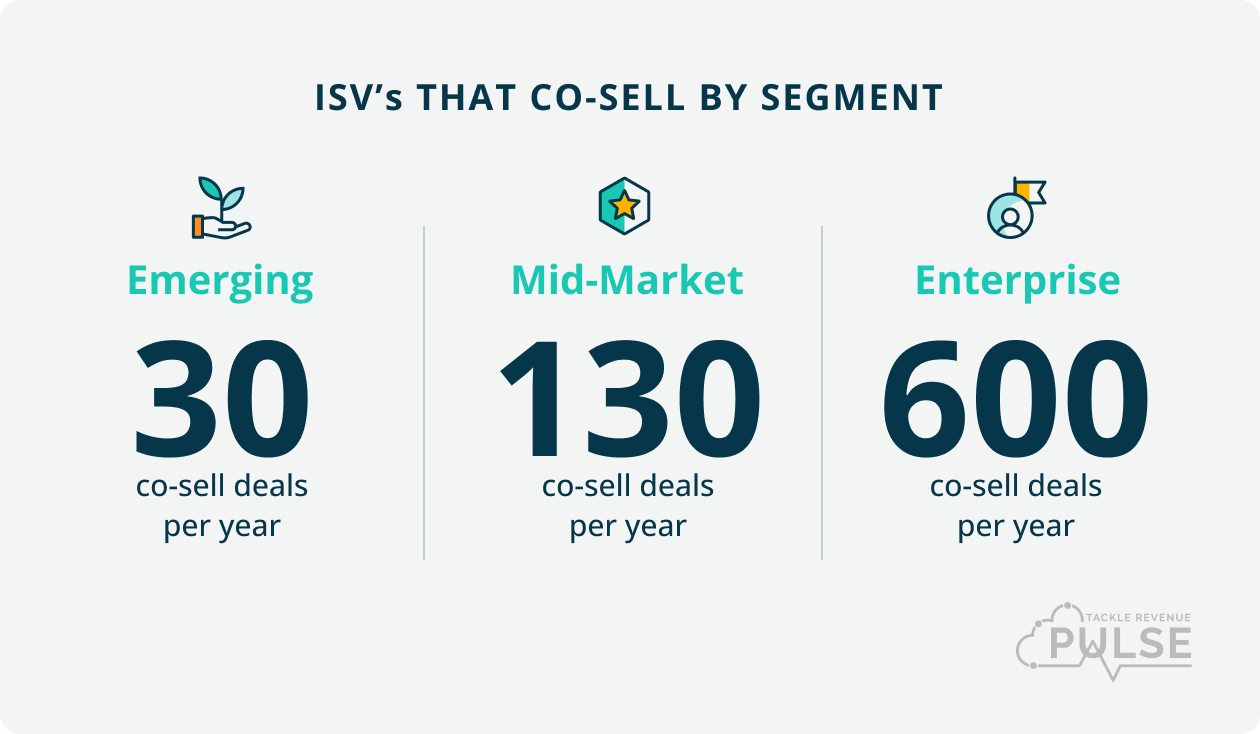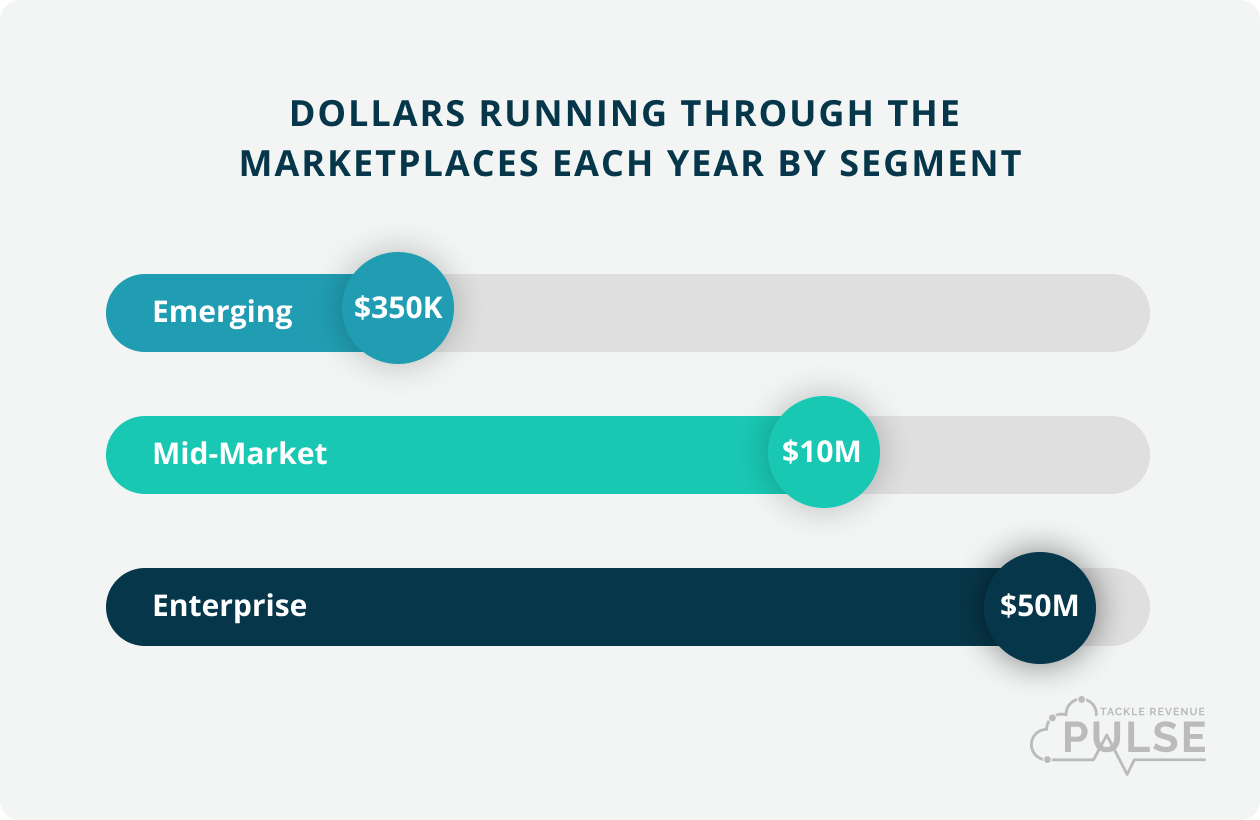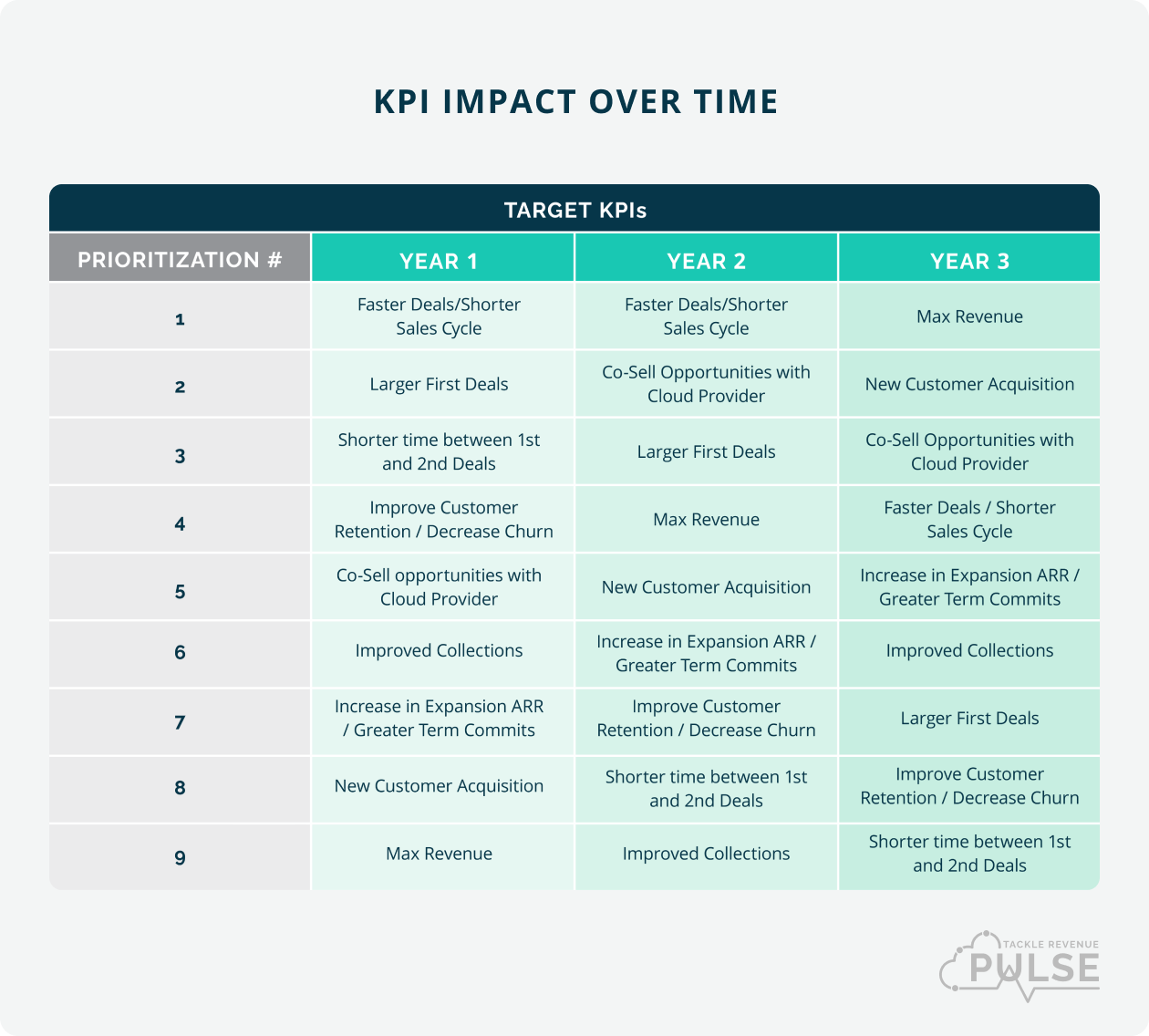How top cloud sellers get the attention of the Cloud Providers and drive mutually beneficial partnerships that result in revenue
You’ve heard it here hundreds of times. Partnering with the hyperscaler Cloud Providers to drive revenue is an efficient way to go-to-market because, done well, it results in faster sales cycles, larger deals, pipeline growth, and higher win rates.
But so many ISVs on this path struggle because they don’t know where to invest time and resources or what initiatives and activities will have the most impact on driving the partnership forward. It can feel like running in place.
Luckily, Tackle has the data and first-hand experience that tell us what the most successful sellers do, how they stand out, and where they focus as they scale their cloud partnership. In this blog, we’ll show you what some of the top cloud sellers look like and share our advice and best practices from working with more than 550 customers to launch, grow, and scale their Cloud go-to-market (Cloud GTM).
1. Top sellers go all-in on a go-to-market strategy with their Cloud Partner(s)
Or they have a plan to build up to an all-in strategy over time. If you treat Cloud GTM like a side project, you won’t see results and you’ll probably become discouraged to continue building on it. You don’t have to go all-in at once, but landing on a strong starting place and creating a long-term vision and plan will set you up for success.
For younger companies, making cloud a central point in your budding go-to-market motion will drive early wins and keep you from needing to retrofit the system later on. For companies that already have established routes to market (direct, channel, PLG, etc.), start with a few deals through this motion and scale up over time (more on that later).
Read More: Tackle’s 2022 State of Cloud Marketplaces Report
2. Top sellers get every function of their org on board
From the C-suite to the sales team to ops, legal, finance, marketing… Cloud GTM is a route to market that requires all hands on deck. This is true of any go-to-market strategy. We often see Alliances teams driving this initiative on their own which, in the long-term, leaves them without the required support to even make a dent.
If the sales team isn’t bought in, deals won’t be taken through Marketplace and they won’t engage with cloud counterparts to co-sell. If G&A isn’t bought in, back office processes will break down and cause rifts in deal closure. If the C-suite isn’t bought in, there will be no top-down drivers for making any of it work.
Getting core functions throughout the organization to lean in is critical for success.
Read More: 4 Tips to Build a Persuasive Pitch for Cloud GTM
3. Top sellers get really good at co-selling
Getting good at co-selling with your Cloud Partners isn’t just about reading all the documentation and following the steps. Documentation and process are important, no doubt, but it has to start with a strategy, a narrative, a dash of data, and a handful of people willing to work out the initial kinks.
In the emerging segment, only about 60% of ISVs are co-selling and they’re executing around 30 co-sell deals a year on average. In the mid-market segment it’s around 130, and enterprise comes in at nearly 600.
Here’s what the most effective co-sellers do:
- Know and evangelize their “better together” narrative – The first thing to think about when deciding which Cloud Partner to co-sell with and why is to develop a narrative on your “better together” story. This should not be an afterthought—it should be the crux of your messaging and inform the foundation for the partnership you’re building.
Read More: Create Your Better Together Framework
- Use data to identify the best fit deals for co-sell – Leveraging data to understand your buyers is a critical step, and for Marketplace and co-sell, knowing which of your buyers are a good fit will improve ramp time, instill confidence in the sales team and help them target their efforts, and enable you to map your buyers to the Cloud Providers’ buyers to create a joint plan.
Read More: How a Data-Driven Sales Strategy Boosts Efficiency
- Evolve and refine over time – Learn what works, what doesn’t, and what can be improved. Ask your cloud reps, customers, and internal teams for feedback. Adapt to that feedback. Continue to scale sales education and enablement. Integrate Cloud GTM with your system of record. Refine back office processes.
Keep Learning: Leveraging Co-Sell with the Cloud Providers to Scale Revenue
4. Top sellers drive transactions through Marketplace
Marketplace and co-sell go hand-in-hand. Marketplaces are the perfect transaction vehicle for your cloud-influenced and cloud-led deals. Driving revenue through the Cloud Marketplaces shows you’re ingrained in the ecosystem, bringing buyers into that ecosystem, helping reps retire quota, and ultimately driving cloud consumption.
On average, ISVs in the emerging segment are running around $350k through the Marketplaces each year, mid-market segment is about $10M, and enterprise is just over $50M. The opportunities for big deals through Marketplace is high and buyers are incentivized to purchase more through the Marketplaces where they can leverage their existing cloud commits as a path to budget.
5. Top sellers obtain competencies and certifications
These badges demonstrate the ISVs expertise, value, and product readiness, and validate their product(s) by trusted vendors like the Cloud Providers. This is another way to show your commitment to the ecosystem and gain buyer trust.
On average, the majority of emerging ISVs tend to have zero competencies—only about 30% have 1 competency—which makes sense as they are early in their journey. Mid-market tends to have around 2, and enterprise has around 4. These may not seem like big differences, but these competencies and certifications can require many steps and evolutions to obtain.
Each Cloud Provider has different competencies and certifications so check with your cloud rep about where to start if it hasn’t been brought up already. As you work through these competencies, you’ll be eligible for new programs that can accelerate and provide new opportunities for your partnership.
6. Top sellers make the most of where they are right now
As they have different resources, ISVs at different stages of growth should focus on different areas as they build their cloud partnership over time. Here’s a summary of the above based on your stage:
Launching: When you’re just getting started in your first year, don’t overcomplicate. Just start.
At this stage, you’re likely just getting your footing and can expect lower company-wide visibility and alignment.
- Create a long-term vision and better together messaging.
- Set revenue expectations at less than 1% of total revenue through this channel as you’re starting out. We see most companies finding success with less than 5% of revenue flowing this way within their first year.
- Get your first Marketplace listing launched, starting with one Cloud Partner that you have a strategic relationship with. We recommend to start where you’re built.
- Start establishing your partner program and building the muscle for co-sell so you can learn what works, work out the kinks, and have a sense of the operational factors you’ll need to build to be successful in the long-run. Your Cloud GTM motion at this point is most likely to be led by the alliances team with some support from sales.
- Speaking of sales, educate your top sellers on the benefits of Marketplace and co-sell and help them identify which buyers in their pipeline are the right fit for this motion.
- Work toward obtaining at least 1 competency or certification.
Keep Learning: How to Get your First Few Transactions on Marketplace with SecurityScorecard
Growing: When you’ve got your footing and are leaning into ways to get more engagement from the Cloud Providers and refine your internal processes, usually year 2-3.
- Evaluate your vision and strategy based on what you’ve learned, refine your better together narrative. If you are partnering with more than one Cloud Provider at this point, be sure your messaging and value props are unique to each.
- Ensure your Marketplace listing(s) matches the way you want to sell.
- Make co-selling a centerpiece of your go-to-market strategy. You should see an increase in the opportunities sourced by your Cloud Partners and in the quality of those opportunities.
- Educate your entire sales team on Cloud GTM selling. Ensure all sellers have the ability to identify buyers in pipeline that are top candidates for a cloud motion.
- Operationalize with your back-office teams, setting up system integrations and automations that help processes move faster with less manual work and so you can ensure you’re properly tracking opportunities through their stages, statuses, activity, and revenue.
- Set revenue expectations around 10-30% of total revenue through this channel. This tends to happens on a sliding scale as you mature and gain traction internally and externally.
- Work toward your next 1-2 competencies or certifications.
Keep Learning: How Lacework tackles Co-sell + Marketplace
Scaling: When you’ve mastered the operations at scale, stay the course and continue to build your stories, usually around year 3+.
- At this point, you should have full company alignment across your board, CEO, and cross-functional leadership and full sales buy-in and engagement. Cloud GTM is likely a part of your company objectives and the value is clear across the org.
- Set revenue expectations at >30% of total revenue. You may be operating with more than one of the Cloud Providers at this stage, so consider expectations with each Cloud based on historicals.
- Evaluate your Marketplace listings, co-sell processes, and back office to look for where efficiencies can be made.
- The quality and quantity of co-sell opportunities should be steady and have a solid conversion rate. What that conversion rate is is highly dependent on your unique engagement, process, and expectations with your Cloud Partner.
- Identify ways to build on the cloud partnership and keep a pulse on Cloud Partner programs. Work with your reps and account leads to keep a steady rhythm of business with quarterly account mapping.
Keep Learning: How Nasuni tackles a Multi-Cloud GTM
And finally, you may be asking what impact this whole Cloud GTM thing will have on your business over time. Check out this image showing how we typically see KPIs evolve.
Read all this and still not quite sure where you are in the journey? Or just want to get more tips and advice specific to your use case? Take this three-minute assessment to benchmark where you are today and get suggestions for next steps on getting Cloud GTM ready.





